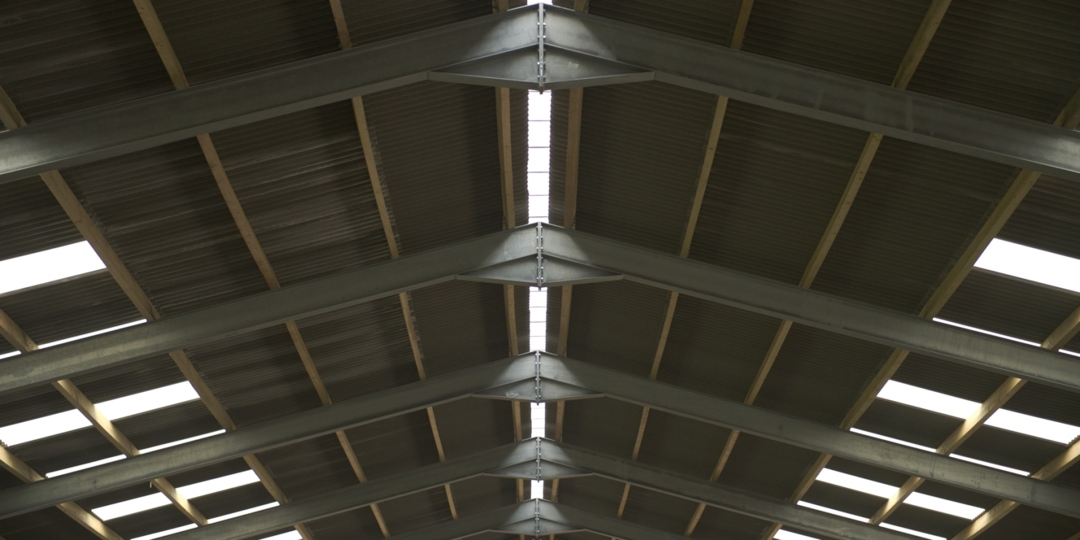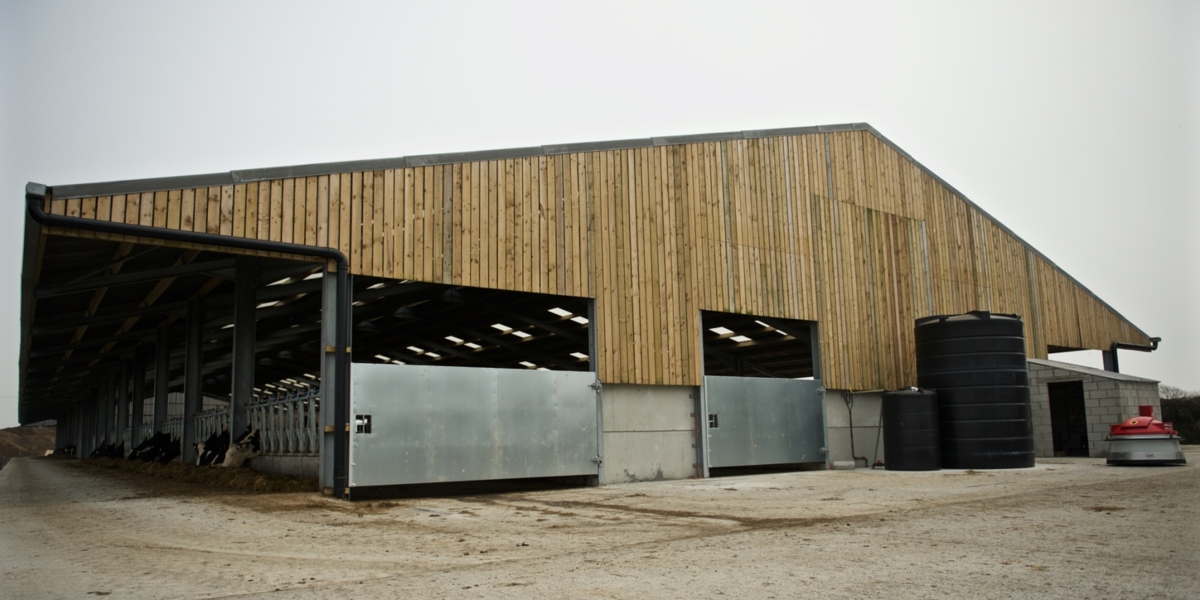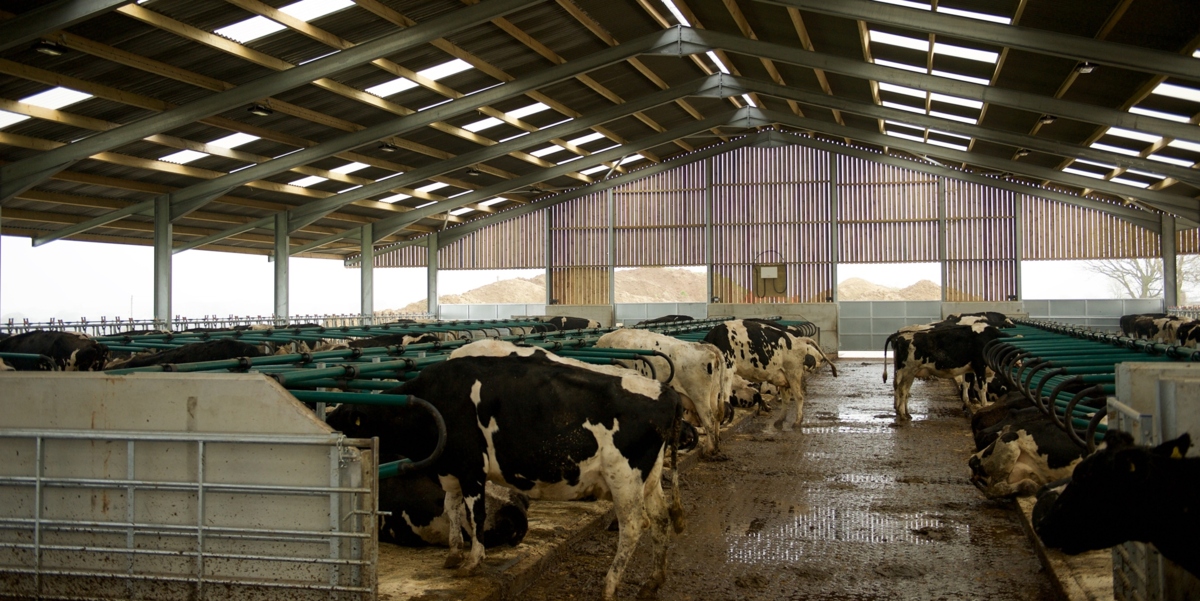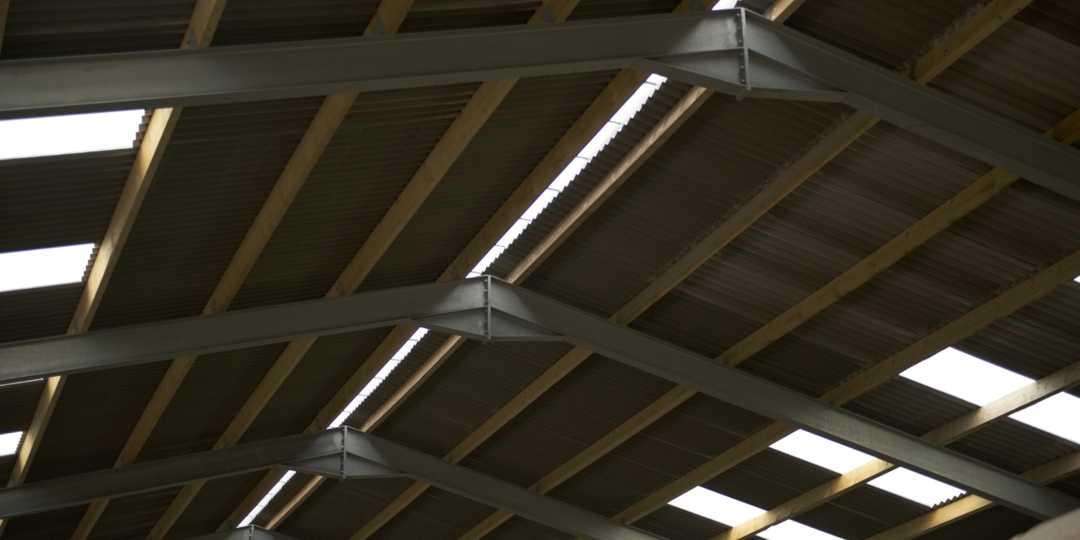Higher West Town Farm, Bideford
Details
- Colour
- Natural Grey
- Project
- New Construction
- Sector
- Dairy and Beef
Description
Steve Davey, based at Higher West Town Farm, was one of the first farmers to invest in the Eternit natural light protected open ridge for his new livestock building at his farm in Woolsery, near Bideford.
The 220-strong herd produces milk for local cheese makers, Parkham Farm, and current yields stand at an average of 8,000 litres/cow, but Steve was adamant that his cows are far from hitting their full potential.
Steve explains: "The farm buildings on site when I took over the farm were perfectly good, but they were a bit piecemeal and I wanted to have one place where I could house all the milkers to ensure they were managed as efficiently as possible."
Plans for the new 240 cow shed were drawn up with the help of Tim Moast and Mark Newton from T&M Buildings Ltd, based in Torrington.
"One of the key requirements for the new shed was to leave some space in the middle where a conventional or robotic milking parlour could be established in the future,” stated Steve. “I opted for a very long building - only four cubicles wide - with open sides to help ensure good air flow through the building and adequate levels of ventilation."
Steve has had cows suffer from pneumonia in the past and as such, getting ventilation right was a key consideration.
“We recommend putting a protected open ridge on most livestock buildings as it is such an effective outlet through which stale air can exit a building,” explains Tim Moast, from T&M Building Ltd, who advised on and built the new shed.
“We also used open sides, and a steeper roof pitch to address Steve’s ventilation concerns. It made sense to use the new, natural light protected open ridge on the build, as it provides the benefits of a traditional protected open ridge, whilst also letting extra light into the building, thanks to the clear, GRP soffit strip. The new natural light system should only add to the overall performance of the build, especially if a parlour is eventually sited in the middle of the building.” Steve adds: “We already had a fairly light building, but I felt that it would help to let as much light in as possible. After all, sunlight is free, so I should be able to reduce my reliance on LED lighting and further improve the indoor environment for my cows.” Whilst the investments on farm have been significant, Steve is adamant that they will all play a part in helping to develop his business and increase overall milk production. “I am confident that with the new facilities in place and the ideas we are going to implement in the near future, I can get my cows producing an average of 10,000 litres a year,” concludes Steve. “Everything has involved a lot of hard work, but it will all be worth it when I know that the herd is performing at its full potential.”








Share your #myeternit
project with the world